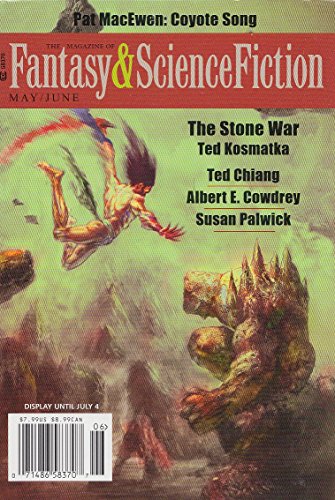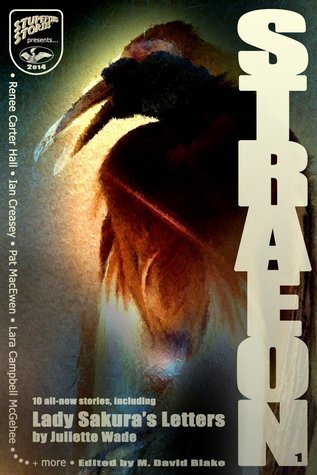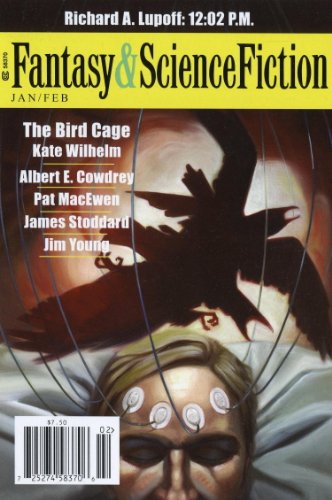If you’ve seen the word before, it was probably part of the Scottish phrase cloch insealbhú – referring to certain well-known inauguration stones. The most famous, of course, would be the Stone of Scone.
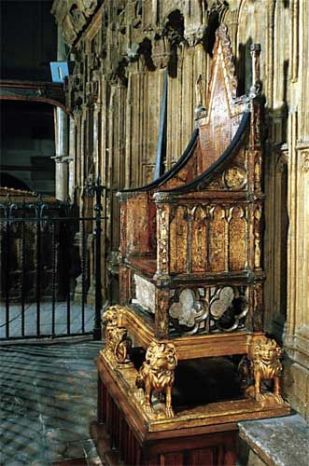 Here it sits beneath the royal throne of the United Kingdom in Westminster Abbey, where it was last used to inaugurate the current Queen, Elizabeth II.
Here it sits beneath the royal throne of the United Kingdom in Westminster Abbey, where it was last used to inaugurate the current Queen, Elizabeth II.
The stone itself is unprepossessing, to say the least.
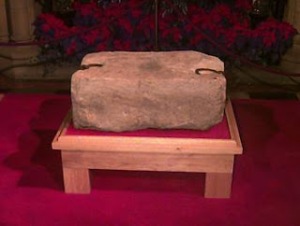 Here, the stone has been cast in a pink light no Scotsman of my acquaintance would ever find acceptable.
Here, the stone has been cast in a pink light no Scotsman of my acquaintance would ever find acceptable.
The Stone of Scone was supposedly brought to Scotland from Ireland centuries ago and used to crown 34 Scottish kings.
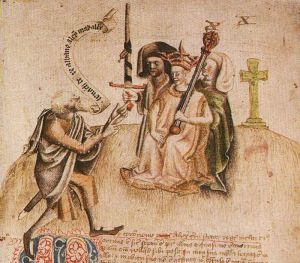 Including Alexander III, seen here during his coronation at Scone Abbey in 1249 AD. He is seated on the Stone of Destiny, and listening to a poet as he recites Alexander’s genealogy.
Including Alexander III, seen here during his coronation at Scone Abbey in 1249 AD. He is seated on the Stone of Destiny, and listening to a poet as he recites Alexander’s genealogy.
Then, in 1296 AD, along came Edward I, King of England. He’d been asked to act as referee in a dispute over which of two Scottish cousins should succeed to the throne there. His solution? He named himself King of Scotland instead of either one! And then he stole the Stone of Scone and installed it in Westminster Abbey.
 Greedy sort…The Brits like to call this lad Edward the Great and Edward the Lawgiver. Scotsmen recall his putting some 10,000 men, women and children to the sword when his troops overran Edinburgh. Why? Because they should have known better than to defy him in the first place.
Greedy sort…The Brits like to call this lad Edward the Great and Edward the Lawgiver. Scotsmen recall his putting some 10,000 men, women and children to the sword when his troops overran Edinburgh. Why? Because they should have known better than to defy him in the first place.
The Stone of Scone has been returned to Scotland, however (in 1996 AD), and no one knows whether it will be used when the next king or queen is crowned. I doubt it will make any difference, for this stone is lifeless.
 When the Stone of Scone was stolen by a band of Scottish nationalists on Christmas Day in 1950 … they managed to drop the damned thing and break it in two!
When the Stone of Scone was stolen by a band of Scottish nationalists on Christmas Day in 1950 … they managed to drop the damned thing and break it in two!
For yes – the stones are living creatures. What else would explain the ancient legends about the original Lia Fail, which would scream or roar when the true king touched it? Has anyone ever recorded the Stone of Destiny doing that upon the coronation of either Scottish or English monarchs?
Indeed, they have not, though a stone surely knows its own father and therefore his kinsmen.
Inauguration ceremonies, you see, originally involved a stone whose ‘presence’ was brought to this world from Faerie, although the ‘source’ remained on the other side of the doors between the worlds. And the thing was not a coronation. It was a wedding feast. The new king spoke of his lands as his “betrothed” and all of the rituals were those of a banais righe. The hilltop location of the inauguration site generally offered panoramic views of the lands in question, and yes, there was a chivaree followed by a wedding night.
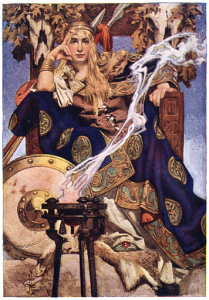 The new king would ‘plow his field’ in the time-honored fashion, and if he was lucky, his ‘betrothed’ would for one night take the form of a goddess, even the shape of Maeve, seen here. If he were crude or rude or unlucky, well, it could be a long, cold encounter with an entity far harder and more determined than he.
The new king would ‘plow his field’ in the time-honored fashion, and if he was lucky, his ‘betrothed’ would for one night take the form of a goddess, even the shape of Maeve, seen here. If he were crude or rude or unlucky, well, it could be a long, cold encounter with an entity far harder and more determined than he.
This marriage was meant to bring fertility to lands on both sides of the doors between the worlds, and to produce a new insealbhú in this one.
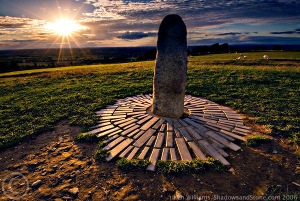 Thus the phallic shape of this Lia Fail, situated upon the sacred hill of Tara in Ireland. Clearly, penetration had to be achieved in one direction or the other.
Thus the phallic shape of this Lia Fail, situated upon the sacred hill of Tara in Ireland. Clearly, penetration had to be achieved in one direction or the other.
Other rites involve cloch insealbhú carved in the shape of footprints.
Here, for example, is the Lia Fail of the Isle of Manx. The mere act of setting one’s foot within its cavity, however, is not enough to achieve consummation! I won’t go into particulars, but leverage is involved and on a monumental scale.
I would advise avoiding close contact with any of the surviving cloch insealbhú, some of whom have become rather cranky of late thanks to the ever-increasing lifespans of royalty on this side of the doors between the worlds. Look at the Queen of England. The woman is 90 years old, and still going strong! Which means that if the Stone of Scone had survived its ‘recovery’ by certain rash young men, and was a true cloch insealbhú, the poor thing would have gone without for more than 60 years. It’s enough to make anyone temperamental!








